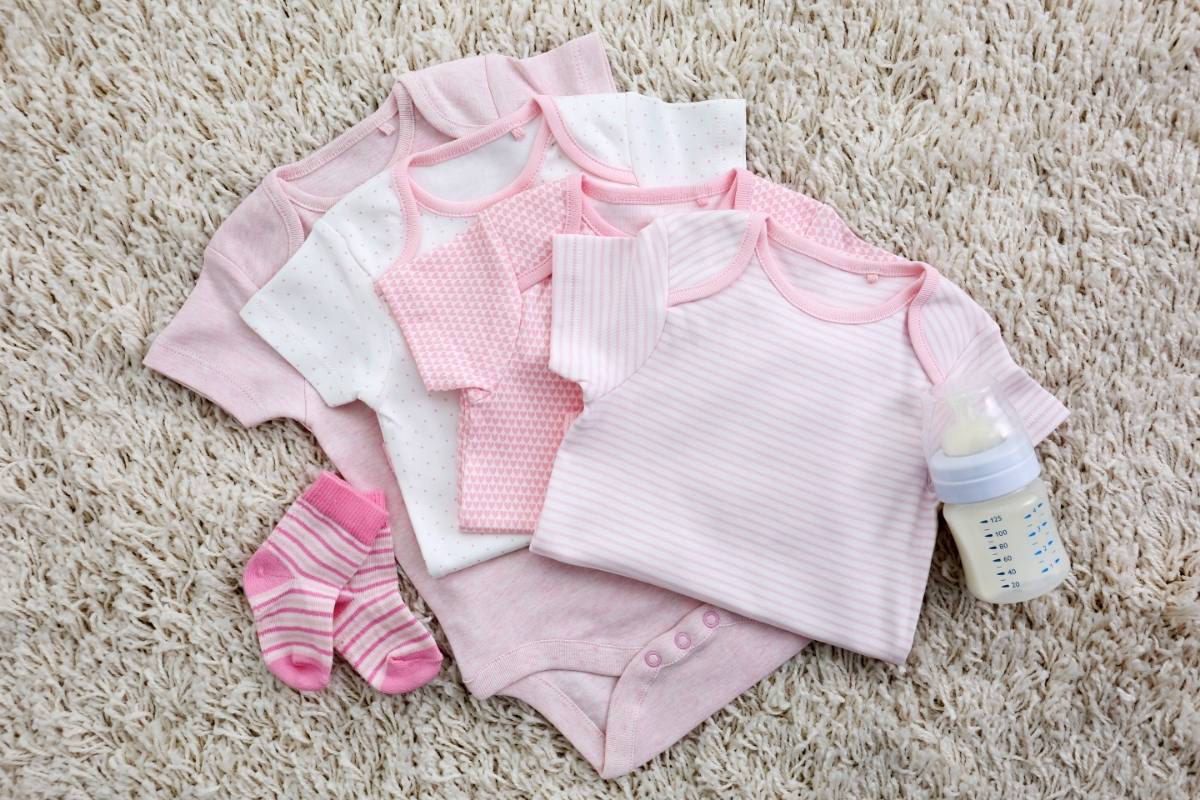If you’ve recently read a shortlist of some of the best baby clothes on the market today, you might see H&M somewhere near the bottom. While this doesn’t speak too well of the brand, it shows they’re also a strong force in the baby clothes market; but are their clothes good quality?
H&M offers some of the best baby clothes at any price point. This is to be expected, as it is one of the biggest clothing brands globally for a reason. If you’re willing to pay a little extra for H&M’s luxury, you’ll get clothes of excellent quality.
In this article, you’ll get a comprehensive review of the H&M brand and the quality of their baby clothesline. You’ll also learn some secrets about the company and if their baby clothes are the best for your baby.

Are H&M Baby Clothes Good Quality?
When you review most negative complaints about most H&M clothes for babies, it’s usually because it runs ridiculously large and not necessarily because it’s low quality.
When buying baby clothes from H&M, you can be sure you’re getting a superior quality to what you will on most budget brands. It also goes toe to toe with most luxury brands, although it’s not necessarily a luxury brand itself.
Like the adult and teen clothing from H&M, you get what you pay for. The more expensive clothes will be a bit better: better stitching, less fluzzy and the cloth will feel a bit nicer.
Is H&M Better than Zara
If you’ve followed this article carefully, you’ll notice that H&M is the second-largest clothing retailer globally. If you’ve wondered who the first is, it’s a Spanish clothing company simply known as Zara, which is in turn part of the Inditex group.
Zara was founded by Amancio Ortega in 1975, and like H&M, they also have a subsidiary for kid clothing dubbed Zara Kids. The company is famed for its quick delivery of products and is the default brand for almost all things clothing.
When it comes to baby clothing, however, H&M is way better than Zara. While Zara focuses mostly on older kids, H&M offers a specific line for babies, which is way better than what you can ever find on Zara’s collections.
Another brand that might be worth considering, if you want to pay a little extra, is Gerber baby clothes.
Do H&M Baby Clothes Run Too Big Or Small?
One of the biggest concerns of mums shopping for baby clothes is how well they fit. It’s seemingly impossible to find a cloth that fits perfectly; if they don’t run too small, they’ll run too big. If you’re shopping for clothes at H&M, you may want to know if they either run too small or too big.
H&M baby clothes aren’t immune to this problem either. One advantage they have over other brands, however, is that they run too big. While this is still a minor problem, it isn’t as much of a problem as clothes that run too small.
If you want your baby’s cloth to be perfectly-sized, you may want to walk down to a physical store to have a first-hand look at how big the clothes are. Otherwise, you may have to wait for months to get the clothes you bought weeks ago to fit well.
You should note that this isn’t a disadvantage for H&M. Most brands manufacture baby clothes that run either too big or too small, so you should use special guides while shopping for your baby clothes anyway.
A Little Back Story On H&M
H&M is a Sweden-based clothing company established in 1947. It manufactures clothes for men, women, children, and it has recently forayed into making baby clothes. With retail stores in over 70 countries, H&M has over 5,000 different stores to its name.
While physical H&M stores are available in 74 different countries, you can only shop their online collection in over 33 countries.
H&M is easily the second-largest clothing retailer worldwide, only surpassed by Inditex. While it has had extensive experience in the clothing and fashion industry for decades, its entry into the baby clothing industry is very recent, making them relatively inexperienced.
The company’s name, H&M, stands for Hennes and Mauritz, fact customers only came to know after the company opened a new clothing line focusing on menswear only.
H&M has worked extensively with many fashion designers and experts to create the great collection of products that customers have come to know and love.
While H&M is winning when it comes to children and adult wears, their excellence in making baby clothes is still debatable. Throughout the rest of this article, you’ll learn some of the differences between this brand and alternate brands that may want to make you prioritize or avoid H&M.
Where are H&M Baby Clothes Manufactured?
If you’re dedicated to baby items manufactured in the United States, H&M mightn’t be the best brand for you. Before going in-depth on where H&M baby clothes, it’s important to review how the brand gets the clothes it sells.
H&M doesn’t own any manufacturing plants per se. It is only a clothes retailer; all of its products are produced by independent manufacturers, which H&M doesn’t control. Therefore, it’s safe to say H&M only has limited say over where the clothes it sells are manufactured.
By investigating its top suppliers, it’s easy to discover where most H&M clothes come from. Unfortunately, it’s not the United States; it’s exactly where almost every other cloth comes from; Bangladesh and China.
According to H&M, its manufacturers are scattered all across the world. There is a chance that the overall you bought randomly was made in the United States (although that would be infinitesimal).
However, most H&M’s suppliers are based in India, Bangladesh, China, and other similar countries. There are a couple of reasons why this is the case, but the most obvious one is the cost factor.
Compared to the rest of the world, USA’s minimum wage is pretty high. If H&M were to base most of its manufacturing in the United States, it will spend almost all of its budget paying wages, forcing the brand to drive up the prices of clothes.
Having most of their suppliers in Bangladesh and China isn’t much of a disadvantage to the brand. Most other brands manufacturing or retailing baby clothes also source most of their shipments from these locations for the same reasons.
Where to Buy H&M Baby Clothes
Unless you’re based in Sweden or any of the 74 countries with physical H&M stores, you might find it somewhat tasking to get your hands on those large clothes from H&M. Even if there are physical stores in your country; you may not be willing to drive tens of miles just to pick up a few clothes for your baby.
Regardless of where you are in the world, there is always a way to buy baby clothes from H&M. If you’re not sure how to go about it, here are some of the best places to buy H&M-branded clothes across different locations in the world.
- H&M Official Website
If H&M sells directly to your website online, the online website is about the most stress-free way to get quality baby wear for your child. At the moment, H&M only supports 43 countries for their online stores, which is pretty limiting.
If you live in Africa, you’d best be looking at alternatives. H&M’s official online stores only sell to four African countries: Egypt, South Africa, Tunisia, and Morocco. There’s a pretty good chance that most Africans reading this are based out of those four selected countries.
Europe is the luckiest continent in terms of H&M support. The brand offers its online store to almost every country in Europe, making it the default mode of purchase if you’re living in most European countries.
- H&M Home Stores
If H&M doesn’t offer its online store to your country, you may have an H&M Home store around. Funnily enough, H&M has physical stores in more locations than it serves with online shopping.
If your country isn’t supported by H&M for online shopping, you shouldn’t expect any magic when it comes to the Home stores. Unless you’re willing to drive hundreds of miles to buy an H&H baby cloth with the risk of it running big, you may want to explore other options.
- Local Stores
If you’re finding it difficult to get H&M clothes for your baby legally, you may want to check out the online stores in your locality. Some stores stock clothes from manufacturers who don’t ship to the country naturally; so, there is a decent chance that you’ll be getting H&M clothes for your baby.
You can also walk into physical stores in your country and browse through the compartment for babies. If you’re lucky, you may find some fitting pieces from H&M, albeit at a super-expensive price.
Before paying an extraneous amount of money for an H&M baby cloth, you should consider asking if the sacrifice is even worth it.

